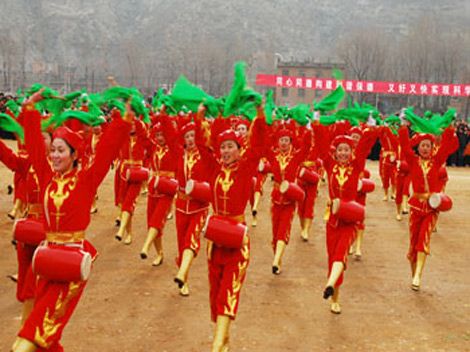| Home > China Feature |
Battle of Bach Dang - Mongol Invasion

The Battle of Bach Dang, which took place at the Bach Dang River, near Ha Long Bay in present-day northern Vietnam, was a battle between Dai Viet and the invading army of the Yuan Dynasty. It's considered part of the Third Mongol Invasion (1287-88).
The battle
As was foreseen, the Mongolians in Thang Long suffered an acute shortage of food. Without any news about the supply fleet, Prince Toghan found himself in a tight corner and had to order his army to retreat to Van Kiep. This was when Dai Viet's Army began the general offensive by recapturing a number of locations occupied by the Mongol invaders. Groups of partisans were given orders to harass the enemy in Van Kiep, putting them at a loss. Toghan had to split his army into two and retreat.
In early April the supply fleet led by Omar and escorted by infantry fled home along the Bach Dang river. As bridges and roads were destroyed and attacks were launched by Dai Viet's troops, the Mongols reached Bach Dang. Dai Viet's small flotilla engaged in battle and pretended to retreat. The Mongols eagerly pursued Dai Viet troops and fell into their pre-arranged battlefield. Thousands of Dai Viet's small boats from both banks quickly appeared, fiercely launched the attack and broke the combat formation of the enemy. Inflicted with a sudden and strong attack, the Mongols tried to withdraw to the sea in panic. Hitting the stakes, their boats were halted, many of which were broken and sunken. At that time, a number of fire rafts quickly rushed toward them. Frightened, the Mongolian troops jumped down to get to the banks where they were dealt a heavy blow by a big army led by the Tran king and Tran Hu'ng Dao.
The Mongolian supply fleet was totally destroyed. Omar was captured.
At the same time, Dai Viet's Army made continuous attacks and smashed to pieces Toghan’s army on its route of withdrawal through Lang Son. Toghan risked his life making a shortcut through forests to flee home.
Art
 more
moreYicheng Hua Gu
The Flower Drum 花鼓 of southern Shanxi Province is a kind of folk d...

Sculpture in Qianling Mausoleum
The sculpture of Qianling Mausoleum is the main relic of the ground ...

A Sweet Art:Sugar Painting
In and around China’s southwestern Sichuan Province, it is usual to ...

Custom
 more
moreWeb Dictionary
Martial Arts
Wuxia, a Popular Culture for Most Chinese-Speaki...
Wuxia (武侠) is a broad genre of Chinese fiction that concerns its...
“Chinese Kung Fu Hot”
“Part the Wild Horse’s Maneton Both Sides”, “White Crane Spreads Its...
“Chinese Kung Fu Hot” in Alfred University
“Part the Wild Horse’s Maneton Both Sides”, “White Crane Spreads Its...





 print
print  email
email  Favorite
Favorite  Transtlate
Transtlate 







